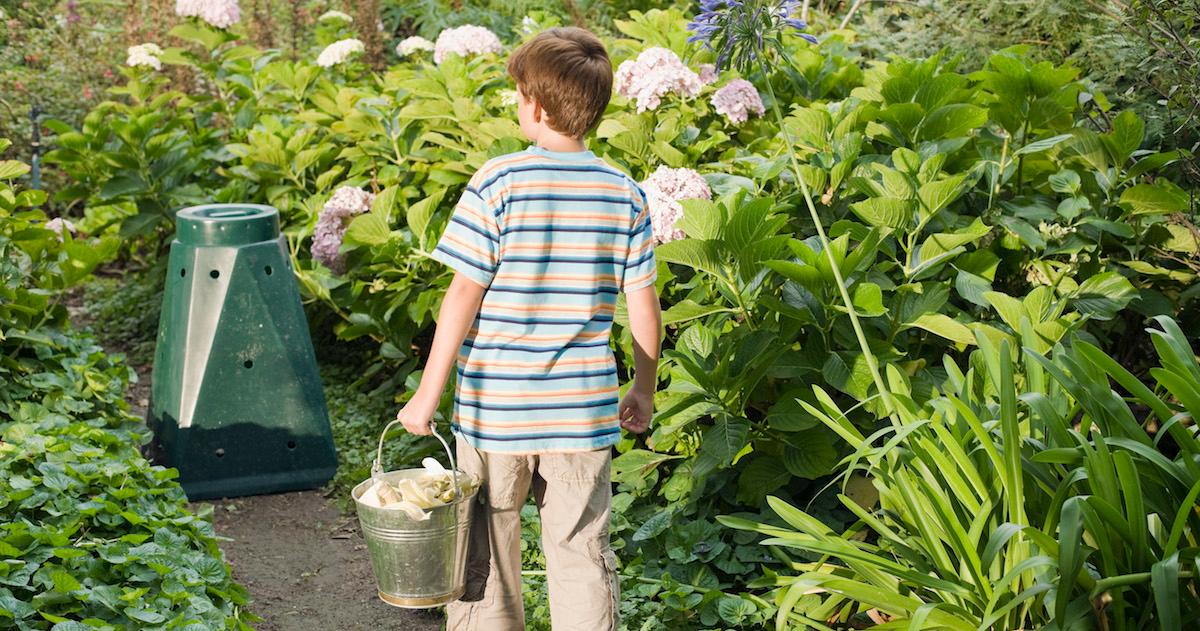How Long Has the Zero-Waste Movement Been Around?
Published April 19 2021, 2:12 p.m. ET

It’s important to remember that long before there was such a thing as recycling or zero waste, people had little choice but to reuse their clothes, household supplies, and various forms of waste. People did this by default for quite a long time, until around the Industrial Revolution, when the number of people and the amount of waste suddenly skyrocketed. And it wasn’t until the modern zero-waste movement started that people finally began taking notice of just how much human beings throw out.

When did the zero-waste movement start?
Many Indigenous societies have been living zero waste since the very beginning. You’ve all heard the old adage about Native Americans using “every part of the buffalo,” right? Well, there’s truth in that colloquialism.
According to Zero Waste Design Guidelines, ancient people had relatively no waste, and any waste they did have, they knew how to repurpose in a meaningful way. We say they “had no waste” due to the fact that all of their discarded materials were made of naturally biodegradable elements like wood, stone, and animal parts, but also because they understood the value of the things they had.
There is evidence that the Aztec empire’s city of Tenochtitlán recycled all waste within the city as far back as the 1300s. Food waste was fed to animals or used for growing crops. Anything combustible was burnt as means of illuminating public spaces. Even human waste was used as fertilizer or to tan leather and create fabric dies.
As societies developed and cities and populations grew, waste became a much bigger problem. Garbage dumps, sewage, and sanitation departments became a necessity. In 1881, New York City started its first official Department of Sanitation, though it was named the Department of Street-Sweeping at that time, according to Zero Waste Design Guidelines. But even then, the resourceful scavenged useful goods, repairable clothing, metal, glass, and edible food scraps from these virginal landfills.
When did modern zero-waste practices begin?
The modern zero-waste movement really didn’t begin until the 1980s, according to Zero Waste Living & Business Solutions. The phrase "zero waste" is often attributed to Daniel Knapp’s idea of Total Recycling and is directly related to Knapp’s salvaging operation in Berkeley, Calif. The idea was that all waste could be diverted away from landfills and be reused, in some capacity, by the community at large.
It was an idealistic concept, to say the least, but perhaps a little too “hippy-dippy” for the times. Nevertheless, the ideas behind the movement, those of sustainability, recycling, composting, and waste management, were slowly beginning to catch on. In towns and cities across the U.S., municipal programs began to pop up. The process wasn’t as perfect as Knapp’s idea, but 40 years down the line, the concept has finally picked up some steam, thanks, in part, to the internet.
What does zero-waste living look like today?
The zero wasters of today have a more all-encompassing view of the ideal than the concept’s progenitors. It isn’t just about wasting less, it’s about altering your lifestyle so that the things you do use are able to be reused, repurposed, or composted. Plastics were already a significant problem back in the 1970s and 80s, but despite the efforts of many early environmentalists, that problem has grown even more prevalent over the years.
If anything, plastics are an even greater problem now, and eschewing such pollutive products is an essential piece of the modern zero-waste puzzle. Being zero waste in the modern age is about having less of an impact on the world. As a result, today’s zero-waste precepts also place greater importance on sustainability. There is a greater focus on using renewable energy and shopping for sustainably sourced food and other goods.
What might a zero-waste future look like?
According to Greenpeace International, the future of zero waste will likely include changes in the way we manufacture, utilize, and dispose of materials. Humanity will likely have to find better ways to recycle plastic or switch to nontoxic, completely biodegradable materials. Single-use items would be completely eliminated, replaced with only items that can be repurposed in some meaningful way.
At the same time, a zero-waste future might involve better municipal sanitation, recycling, or, if we’re lucky, zero-waste programs. Such programs would serve the same purpose as current recycling programs, as a way to make zero-waste living more accessible to everyone.
If this zero-waste future comes to pass, it could be the utopia we’ve all been waiting for. But in order for it to become possible, people need to appreciate the sustainable way that our ancestors lived. They need to take those lessons, as well as our collective mistakes, and use them to improve and inform our future.